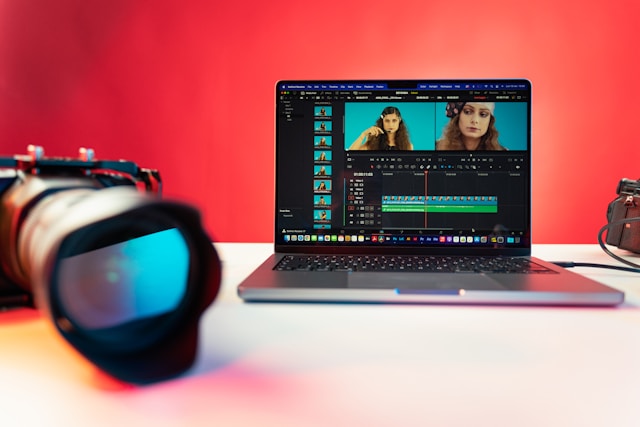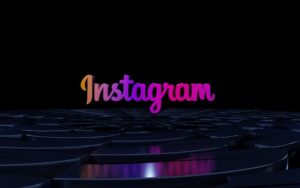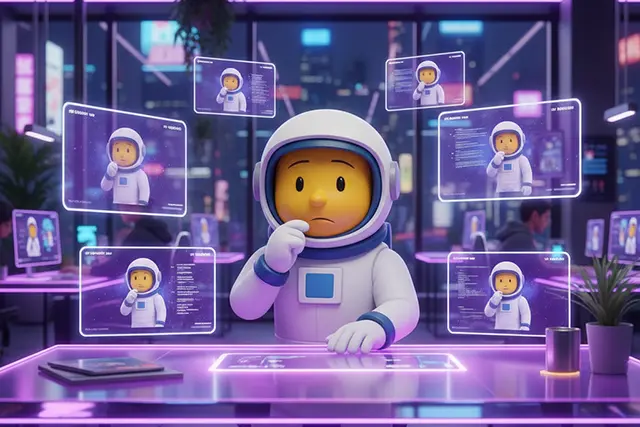5 Guides to Becoming a Digital Content Creator

Are you ready to step into the digital world but don’t know where to begin? Are all the technical jargon and seemingly infinite options making you dizzy? Well, worry no more. We have curated this simple and efficient guide to help you kick-start your journey as a digital content creator.
“Every expert was once a beginner.”
That’s right! Every successful content creator you admire today started right where you are, probably even more bewildered. So, take a deep breath, muster up your courage, and let’s transform your passion into a flourishing digital presence. This comprehensive guide will not only walk you through the basics but also share valuable insights to make your content stand out. So, are you ready to take the leap?
Table of Contents
Understanding the Role of a Digital Content Creator
As a digital content creator, you are the heartbeat of the digital world. Your role begins with the creation of compelling content that captivates an audience and inspires interaction. But it’s more than simply crafting an attractive blog post or amassing followers on Twitter. You’re tasked with storytelling, shaping ideas into practical value, and generating a connection between your audience and your brand.
You’re entrusted with creating both relevant and engaging material. You’ll need to be adaptable, ready to delve into different forms of content like blogs, social media posts, and podcasts. From producing videos and writing articles to developing digital graphics and curating engaging posts for social media, your work is wide-ranging.
Remember, an effective digital content creator is always responsive to the needs and preferences of their audience. This includes keeping an eye on trends and news relating to your field, adapting your content strategy as necessary and engaging with your audience regularly to build relationships.
Essentially, your role as a digital content creator involves experimenting, learning, growing and, most importantly, engaging through your content.
Finding Your Unique Voice in Digital Content Creation
Unlocking your unique voice in digital content creation can seem like a tall task, but rest assured, it’s more intuitive than you might think. You already have a unique voice. It’s just a matter of expressing it in your digital content.
Begin by identifying what makes you, you. Consider your interests, experiences, values, and style. Once you have a good idea of your identity, use it to guide your content creation. Consider, for instance, how your love for environmental conservation could influence the topics you choose, the way you speak, and the organizations you showcase. That’s a surefire way to keep your content authentically ‘you’.
Reflect your voice not only in what you say but also in how you say it. If you naturally speak in a friendly, informal tone, let that shine through your content. Equally, if you’re more comfortable being straightforward and professional, go for it. Just remember, consistency is key. Users are more likely to continue engaging with your content if they feel they know what to expect.
Don’t be afraid to experiment, it’s all a journey. Test different approaches, assess how your audience responds, and refine your voice accordingly. And remember: It’s okay to evolve. In fact, it’s encouraged. As you grow and learn, so will your voice. Just keep it authentic and true to yourself.
Maintaining your unique voice may take time and practice, but it’s an effort that can pay significant dividends. An authentic voice can make you stand out in a crowded digital landscape, keep your audience engaged, and ensure that your content is not only seen but also remembered.
Choosing the Right Medium for Digital Content Creation
In the grand scheme of digital content creation, choosing your medium is like selecting the canvas for your masterpiece. Will it be a blog, a podcast, a YouTube channel, or a social media account? Maybe all of them? Your decision here will ripple through your entire career, making it an important one to consider deeply.
Let’s take a closer look at each option.
Blogs
Blogs are a fantastic platform if you’re adept at written communication. You can flex your storytelling muscles and take advantage of SEO-friendly frameworks, opening your work up to massive organic traffic. You’ll also find a multitude of resources and platforms expressly designed for blogging, like WordPress and Blogger.
Podcasts
On the other hand, if you have a voice made for radio and enjoy having in-depth discussions, you might be well-suited to podcasting. It’s less visually-focused and opens up your content to consumers on the move, or those who prefer to listen rather than read or watch.
YouTube Channels
YouTube offers a space for content creators who prefer to work visually. If you enjoy making videos, hosting webinars, or creating other multimedia content, this could be an excellent platform for you. Plus, it gives you the potential to turn viewership into direct income via ad revenue.
Social Media
Finally, don’t overlook the power of social media. Platforms like Instagram, Twitter, and Facebook have billions of users waiting to consume your content. They also provide a built-in network effect and many ways to monetize your platform. Still, they require consistent presence and a knack for short, engaging posts.
Choosing your medium is personal and will largely depend on your skills, interests, and target audience. Being versatile and staying true to your unique voice will keep your content engaging and authentic. And remember – it’s always possible to diversify later down the line!
Essential Tools for Every Digital Creator
Once you’ve found the format that suits you, you’re going to need the right tools for the job. Without are certain must-haves that are crucial for every digital creator, regardless of their preferred platform.
Graphic Design Software
Images communicate more than words ever can. They capture attention, arouse interest, and elicit emotions. Powerful graphics are a cornerstone of digital content creation, and for that, you need robust graphic design software. Tools like Adobe Photoshop or Canva give you the flexibility to customize your visual content to match your unique sense of aesthetics.
Video Editing Tools
If you’re more into visual storytelling, video editing tools are non-negotiable. High-quality videos are fundamental for captivating your audience and keeping them engaged. Applications like Adobe Premiere Pro or Final Cut Pro provide a range of features that can help you cut, tweak and polish your videos till they shine.
Audio Equipment and Software
For podcasters, high-quality audio is everything. It’s vital to invest in a decent microphone, sound mixer, and headphones. Audio editing software such as Audacity or Adobe Audition can help you ensure your content sounds just as good as it feels.
Analytics Tools
Creating exceptional content is only half the battle. Understanding how your audience interacts with your content is pivotal too. Insights about who your audience is, what they like, and when they engage most can guide you in creating strategically fashioned content. Google Analytics and social media analytics tools offer comprehensive insight into your content performance.
Investing in the right tools is essential, not just for creating appealing content but also for continuous learning and improvement. As a digital creator, these tools are your best friends, providing endless opportunities for creativity and growth.
Mastering the Art of Content Planning
Understanding your audience
You’ve likely heard it a thousand times, but we’ll say it once more: you must know your audience. The type of content you create should be determined by what your audience finds engaging, educational, and delightful. Use audience analytics tools to learn about their locations, preferences, ages, and online habits. The more you know about your audience, the better you can tailor your content to resonate with them.
Setting a consistent schedule
Consistency is key in content creation. A regular posting schedule keeps your audience coming back for more. Whether it’s daily, weekly, or monthly, make sure to stick to a timetable that’s manageable for you. It’s better to deliver quality content consistently rather than rushing to meet unrealistic deadlines, leading to burnout.
Brainstorming your ideas
Brainstorming is crucial for content planning. Work sessions dedicated to idea generation can result in unexpected creative sparks, painting a clear roadmap for future content. You can brainstorm either individually or with a team, encouraging everyone to think outside the box. Remember to document all the ideas – there’s no such thing as a bad one during this phase. You never know what might serve as a brilliant starting point for a piece of digital content!
Storytelling techniques
Regardless of the format, transferable skills like storytelling can significantly enhance your content’s impact. Craft narratives that captivate your audience’s attention, using personal anecdotes, case studies, or even a story arc within a series of posts. By doing so, your content can resonate on a deeper, more emotional level with your audience.
Reviewing and revising
Nobody crafts perfect content at first try. After creating your digital content, always take the time to review and revise. Check for any errors, inconsistencies, or areas where clarity may be lacking. This phase is also a chance to refine your message, enhance the language, and ensure the content aligns with your overall brand presentation.
Seeking feedback
Feedback is food for growth. Make use of constructive criticism from your audience and peers to refine your content over time. A fresh perspective can offer insightful suggestions or spot weaknesses that may have otherwise been overlooked. By continuously learning and iterating, you can rise to new heights as a digital content creator.
Reference: https://www.quora.com/What-is-digital-content-creation







